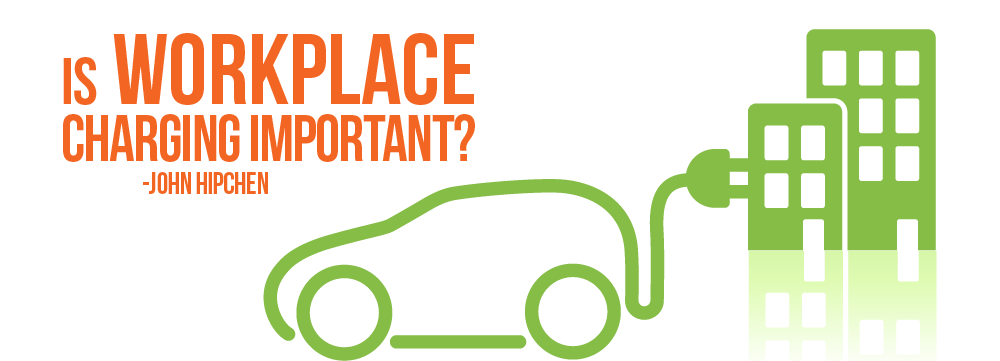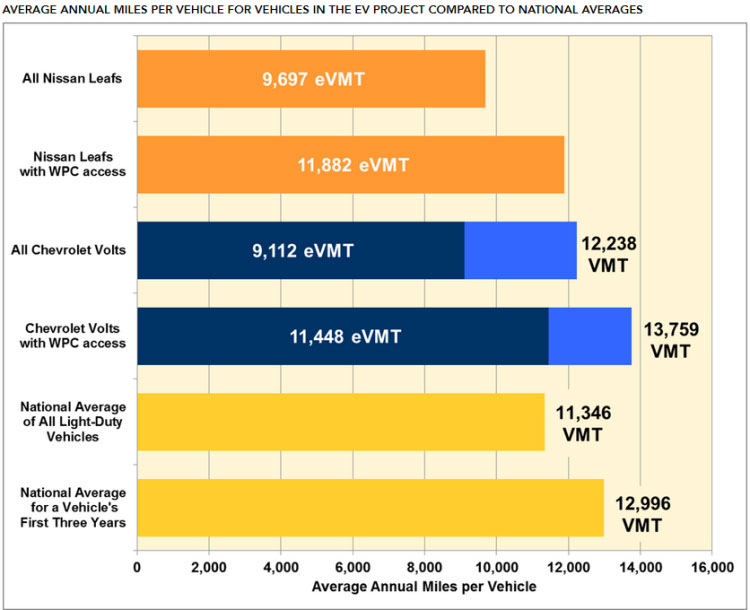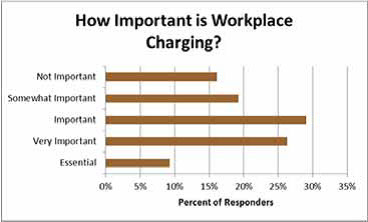
Focusing our Priorities on Workplace Charging
John Hipchen | June 2, 2016
What Have We Learned from Studying EV Charging Habits?
Answer: Workplace Charging is Critical to EV Adoption
With the introduction of the Nissan Leaf and the Chevy Volt in 2010, America entered a new age of electric vehicles (EVs). For the first time ever, cars with electric drive trains had the technology and economics to handle a large percentage of routine daily commuting. Although sales were modest at the start, consumer satisfaction came back at unprecedented levels. One of the biggest concerns among EV manufactures as well as all stake-holders in the EV industry, was adding enough public charging to support EV owners and encourage new EV sales. Today, public charging is still sited as one of the critical barriers to wide-spread EV adoption, but the discussion is now focused on exactly what kind of charging is best and where it should be installed.
Several organizations started studying the charging habits of EV drivers almost as soon as the vehicles were introduced. Two DOE-funded projects were especially interesting; “The EV Project” and the “ChargePoint America Project”. Data was collected during calendar years 2011, 2012 and 2013. To this day, these two projects together represent the largest set of data in the world on EV charging habits. Information came from over 17,000 Level 2 chargers installed across 22 different U.S. regions spanning coast-to-coast. More than 8,000 privately owned Leafs and Volts were enrolled and the primary goal was to simply gather data about EV charging and driving habits. Idaho National Laboratory (INL) collected and analyzed the data.
Last September (2015), INL published a fascinating report titled; “Plug-in Electric Vehicle and Infrastructure Analysis” (INL/EXT-15-35708). For Telefonix Inc., this report validated the company’s logic in developing the PowerPost® EVSE product line. This statement taken directly from INL’s summary report, “Plugged In: How Americans Charge Their Electric Vehicles” says it all:
The answer was clear: despite the installation of extensive public charging infrastructure in most of the project areas, the majority of charging was done at home and work.
Early on, the business development team at Telefonix identified two key attributes missing from the EV charging market; (a) what seemed like a complete absence of low cost, low-current charging stations specifically designed for commercial, long dwell parking and (b) a lack of cord management, noting that living in the Chicagoland area, company executives found tangled cords that were sometimes buried in snow. The result was the introduction of the L1 PowerPost™ EVSE in 2013, soon followed by the L2 PowerPost™ EVSE. Bucking the predominate trend at the time for high-power, costly charging stations, Telefonix set out on an education program to demonstrate the practicality of their low-current charging solutions. Hundreds of installations later, the data published by INL proves that Telefonix was on the right track with their low-current PowerPost EVSE product line. The product line was, and remains based on the premise that if an EV driver can simply gain back the range used to commute to work, then that EV will become a much more useful vehicle. The chart below demonstrates how the data supports this belief:

DOE, Office of Energy Efficiency and Renewable Energy
With workplace charging available, Nissan Leafs and Chevy Volts acquired up to 25% more annual-miles-per-vehicle than the same vehicles without access to workplace charging. Also note that the PEV’s with access to workplace charging drove even further than the national average for ALL light-duty vehicles.

INL, "Plug-in Electric Vehicle and Infrastructure Analysis", Figure 11-182
More than 60% of those enrolled in the EV Project responded that workplace charging was either important, very important or essential. Again, pointing to workplace charging as a focus for future EV charging infrastructure.
A Few Things to Remember:
• Cars in America spend most of their time parked at home and at work. Therefore, it makes sense that workplace charging is essential to the wide-spread adoption of EVs.
• The amount of energy needed to replace the typical one-way daily commute (less than 20 miles) costs less than $1, that’s less than a cup of coffee.
• The cost of adding workplace charging can be minimized with low-current chargers such as the PowerPost EVSE and locating the chargers close to the electrical distribution panel.
• When EV charging is available at work, employees are more likely to consider the purchase of an EV – so be prepared to add more chargers.
Copyright © 2022 Konnectronix, Inc. All rights reserved. For a complete Konnectronix patent and trademark listing, please visit our legal page.
2340 Ernie Krueger Circle Waukegan, IL 60087 847-672-8685